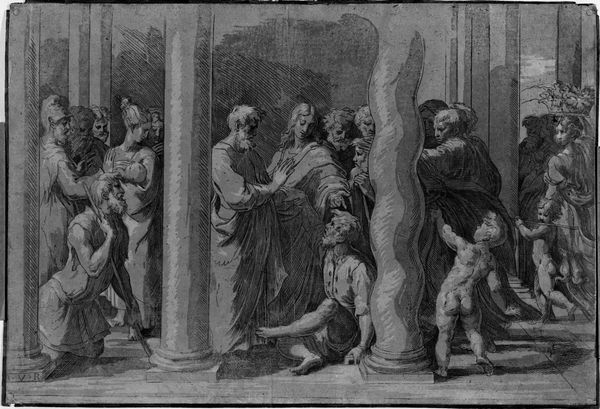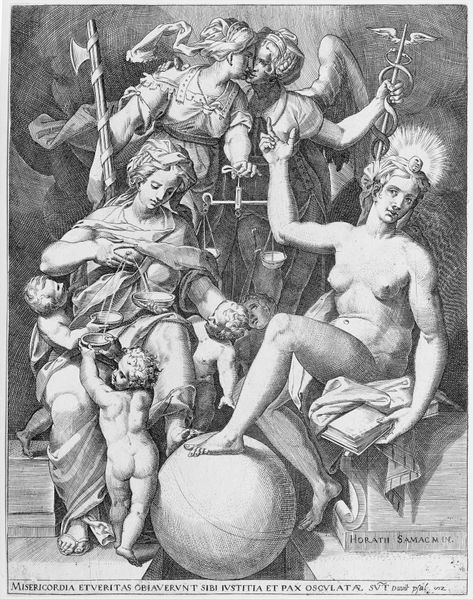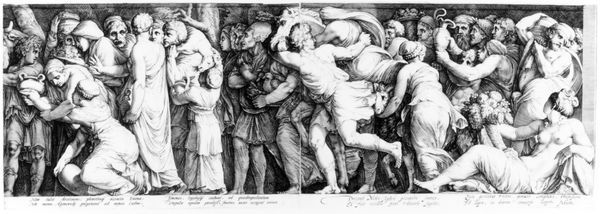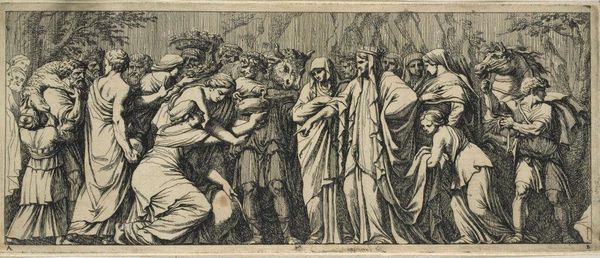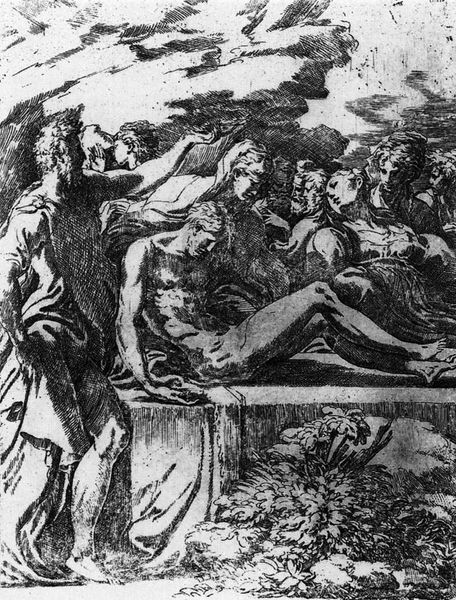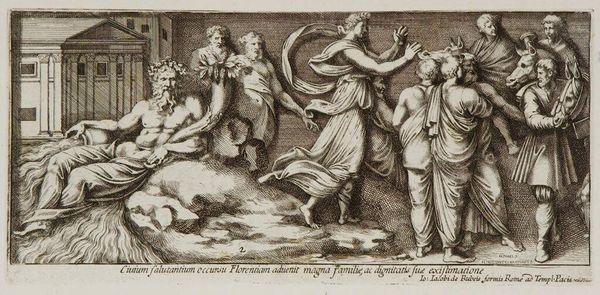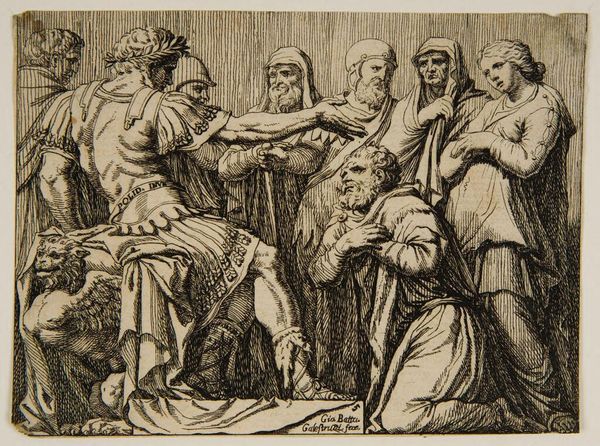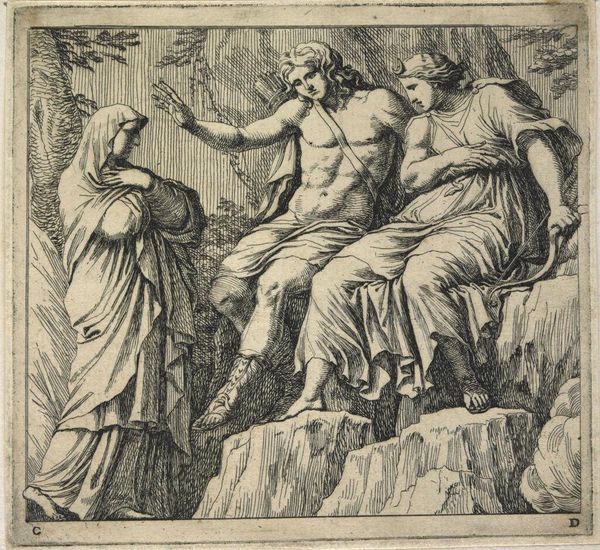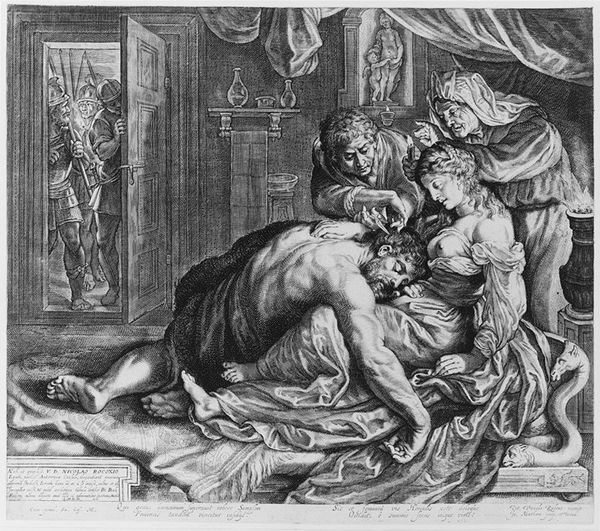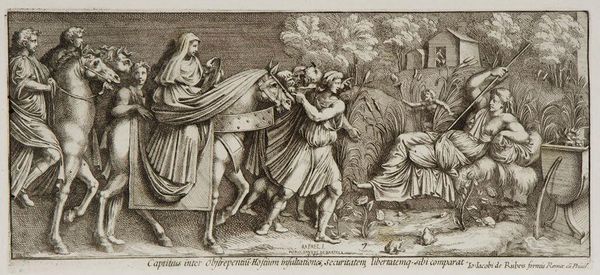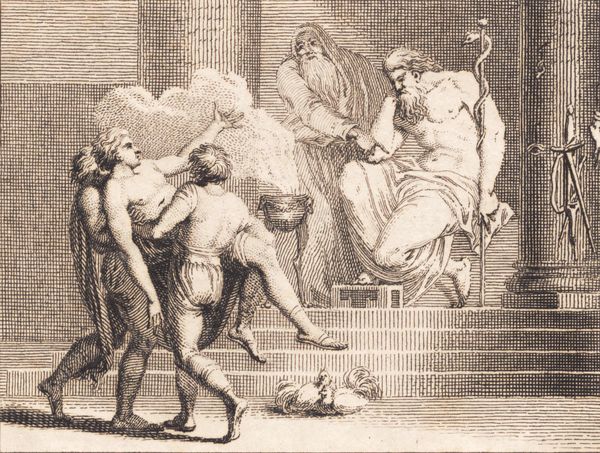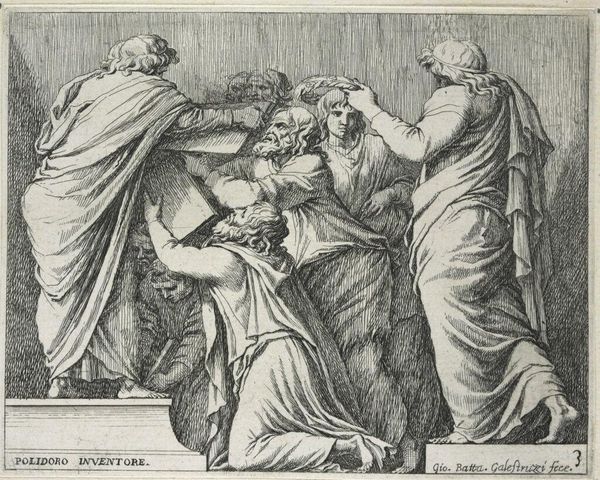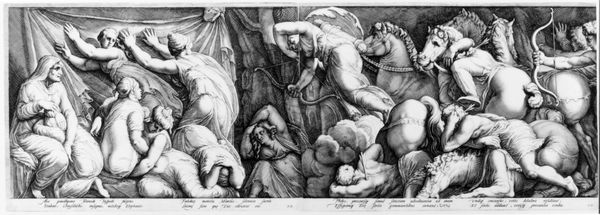
drawing, print, engraving
#
drawing
#
allegory
# print
#
carving
#
mannerism
#
figuration
#
line
#
history-painting
#
engraving
Dimensions: sheet: 10 3/8 x 30 1/8 in. (26.4 x 76.5 cm) two frames, each : 15 3/4 x 60 1/16 in. (40 x 152.5 cm)
Copyright: Public Domain
Editor: This is "The Story of Niobe," an engraving by Jan Saenredam, created sometime between 1560 and 1607. The sheer number of figures is overwhelming, and there's so much intense emotion packed into a single scene. What cultural meanings or historical precedents do you think contributed to the imagery? Curator: This print encapsulates a very turbulent and emotional story from Ovid’s *Metamorphoses*. What strikes me is how Saenredam utilizes Mannerist conventions – elongated bodies, dramatic poses – to convey the sheer emotional weight of Niobe’s tragedy. Do you notice how the figures aren’t simply arranged, but almost staged, like a theatrical tableau? Editor: Yes, that exaggerated feeling almost pulls you in! So, are those Apollo and Artemis exacting revenge? What’s the significance of depicting them so prominently? Curator: Absolutely, that's Apollo and Artemis, deities associated with sun and moon and symbols of divine order. Notice the arrows, not just weapons, but ancient symbols of fate. Niobe's hubris – her pride in having more children than Leto, the mother of Apollo and Artemis - invites this divine retribution. Saenredam’s masterful line work, the textures he creates, contributes to that tension. Where does your eye go first? Editor: Probably to the group on the right; the way they are clinging to each other is dramatic. All that chaos and loss – it feels like a warning. Curator: Indeed. The tale resonates even now. The symbols remind us of how deeply ingrained these stories were and still are in the collective consciousness. The human condition, really, is what is laid bare in these images. Editor: Seeing it as a reflection of collective memory changes my understanding quite a bit. It's more than just a historical artwork; it's a poignant commentary on human pride and fate. Curator: Exactly! Art like this invites us to contemplate our own place within these enduring narratives.
Comments
No comments
Be the first to comment and join the conversation on the ultimate creative platform.
